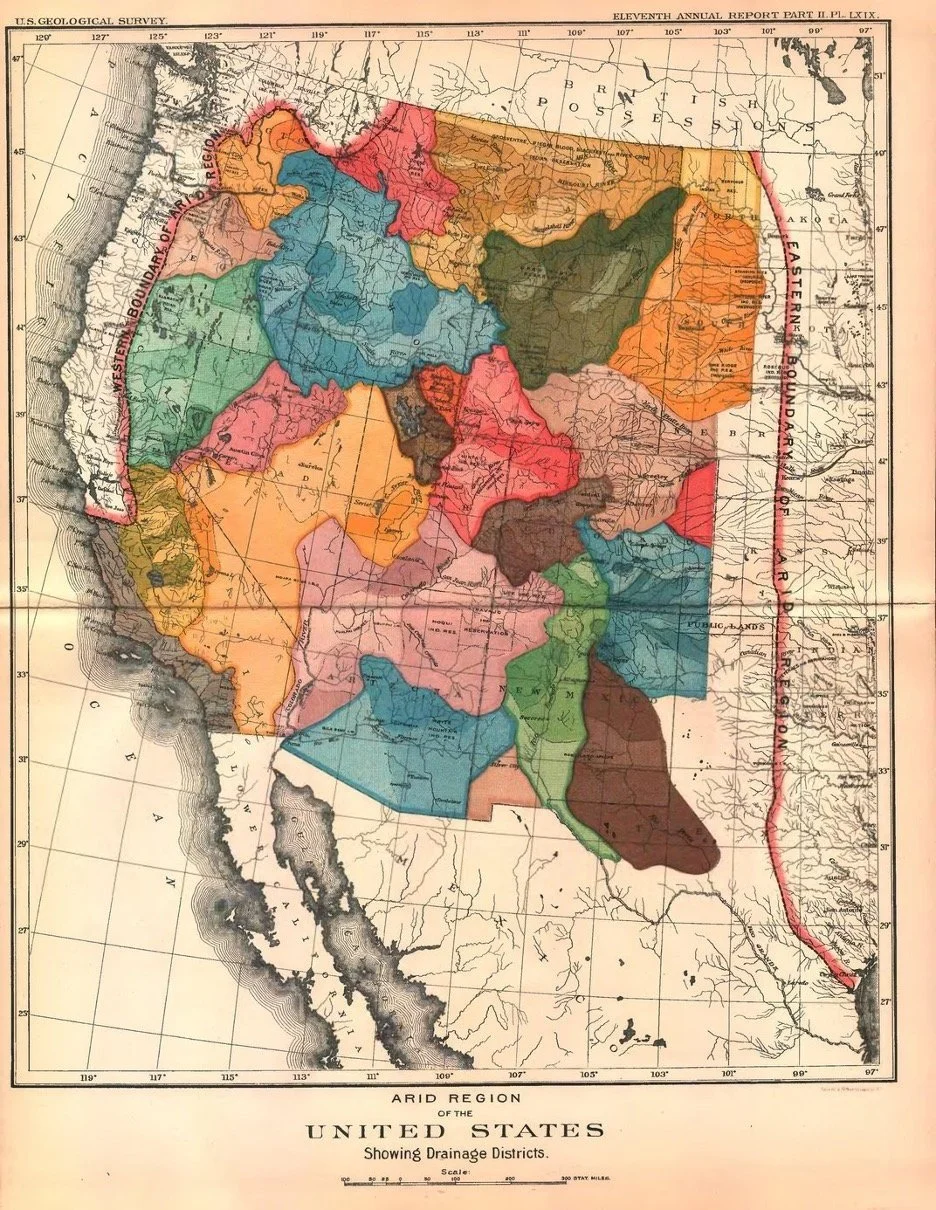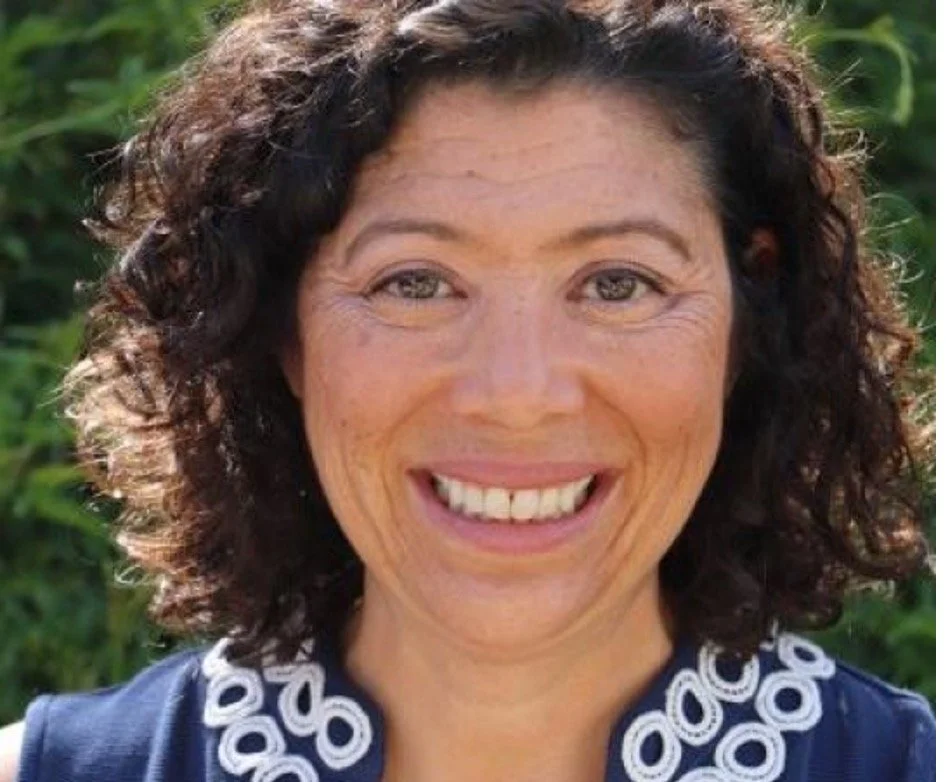Rethinking the watershed - and scaling up
A consortium of preeminent western leaders, we bring new approaches and allies to challenging Western water issues. Learn more
Friends of Confluence West –
"Too much community control!"
"Too much planning!"
"Not the American Way!"
These are just a few of the comments members of Congress made in 1881 as they rejected John Wesley Powell's recommendation to establish western state lines around watershed boundaries.
Since then we've been living with the consequences of that decision with segregated western water decision-making and institutions.
Debbie Franco spent some time with us recently talking about the new Watershed Framework she and her colleagues have launched. She notes in her introduction to the Watershed Solutions Network's new Watershed Framework that as we go deeper into the time of the climate emergency, our current siloed laws, policies, and infrastructure are rapidly becoming unworkable.
How do we build a just, sustainable, and healthy American West? Time to think and act differently on how we relate to our watersheds, rivers, and water supply. The Watershed Framework helps us build that path.
For the West,
Kimery
P.S. Following on our piece last month, Wildfire, Health, Water, Community, the good news is that the Southwest monsoon rains are starting to kick in. The really bad news - there are now urgent debris flood warnings for the 325,000 + acre Hermits Peak/Calf Canyon wildfire.
“Again, in our traditional approaches, we tend to have the buck stop with one kind of entity, like a water agency. Or now a groundwater sustainability agency. “
Kimery: Debbie Franco, thank you for taking the time and giving us an overview of this fascinating new Watershed Framework. Let's start with first understanding what the Framework is and what it isn't.
Debbie: I'll start with what the Framework is. In California, we've been trying to get to the watershed scale 'thing' for about 40 years now. And so, we intend this Watershed Framework to be the next evolution of thinking about how we do that.
We designed the Framework for folks interested in collaborating at the watershed scale. It's not going to tell people what to do. It offers suggested activities.
The first step in the Framework is genuinely centered equity. In many of our processes over the last 40 years, equity has been the last thing we focus on. It's the afterthought.
That means ensuring that the folks representing diverse voices are part of the initial conversations. So before you even think about what you're doing, you should think about who you want to do it with. Equity should be your first step.
The Framework is also designed to prompt us to rethink how we do cross-sector and cross-jurisdictional work. So we set the Framework up so that you don't actually start until you have a cross-sector, jurisdictional alignment of conveners.
Again, in our traditional approaches, we tend to have the buck stop with one kind of entity, like a water agency. Or now a groundwater sustainability agency.
Who do you need to bring to the table when it comes to equity? Then ask yourself who is influential in your watershed - across the sectors, including land and water? That means folks working on urban, agricultural and forest issues, and all the different kinds of water folks.
Kimery: How did you and your colleagues come up with this Framework? Was there a specific process? An end goal?
Debbie: We were lucky to get some funding from the Water Foundation to convene a group of land and water leaders across California.
We just started by bringing all the things we already knew to the table. Then, we worked out what a high level of vision is for us. From there, we asked what would things look like when we get this right.
Then we worked our way backward. What do we have to do together to get to that vision? One of our participants hand-drew a watershed map to help us think things through. The drawing of the watershed helped us understand where things are interdependent. Then the group refined all of the pieces and parts that exist across a watershed in order to be more intentional.
Next, we did outreach to other folks who couldn't participate in the virtual sessions. Who had important information to bring to the conversation? After that, we drafted the Framework and everyone reviewed and commented on the draft.
But I would like to point out that the Watershed Framework is a high-level theory. We all acknowledge that. The next step is to test drive it, to ground-truth it, and to evolve it; it is not meant to be static. It's meant to be a starting point for cultivating learning. And action.
Kimery: That takes us to the next question – a year or so from now, what do you want to be able to say about the Framework?
Debbie: A year from now, we plan to be actively testing the Framework in willing watersheds. We're in conversation with several watersheds right now, or we have folks in a watershed that have expressed interest in pulling together. That array of folks are those conveners I mentioned before who work across land and water issues.
Then, if the watershed is ready, our gathering happens - by design in the upper watershed. The headwaters seem like the best way to start the conversation.
When I say 'watershed,' I mean from the headwaters to groundwater to the outflow, or crest to coast - the whole thing, including the engineered parts of the system.
Kimery: When you say assessing, or the 'readiness' of a watershed, could you define that a little bit more?
Debbie: Sure. So many different things are happening in every watershed at any given time. Some things happening right now might be good entry points for starting to test drive the Framework. For instance, we have many folks struggling and grappling with implementing SGMA [ed. California's Sustainable Groundwater Management Act]. The politics of that process could offer good timing, and an opportunity to engage in the conversation. If we're not also coordinating and actively managing our surface water as an interdependent system, we have arbitrarily divided the watershed.
Affordable housing is a big issue in California, and water has become this awkward leveraging point. Some folks are using water as a justification not to build affordable housing. So that can be a good entry point into a conversation, a watershed-wide conversation.
If folks come together for the initial assessment and don't feel like the conditions are ripe, then it's probably not the right time for the watershed.
You have to have a good array of willing and influential folks in a watershed who link arms. And who feel confident they can implement the positive strengths in their watershed going forward.
Learn more about the Watershed Framework.
Debbie Franco
As Managing Director of the Water Solutions Network, Debbie coordinates and leads collaboration among all the WSN participants. Previously, she worked for almost ten years in the California Governor’s Office, most recently as the Senior Advisor for Water and Rural Affairs. She brings 15 years of experience in the water sector, including collaborating on the Human Right to Water, the Sustainable Groundwater Management Act, and drought response. Debbie got her start in the water sector at the Environmental Justice Coalition for Water, where she ultimately served as the Policy Director. She holds a Master’s degree in social ecology from the University of California, Irvine, and a BA from the University of California, Davis.


